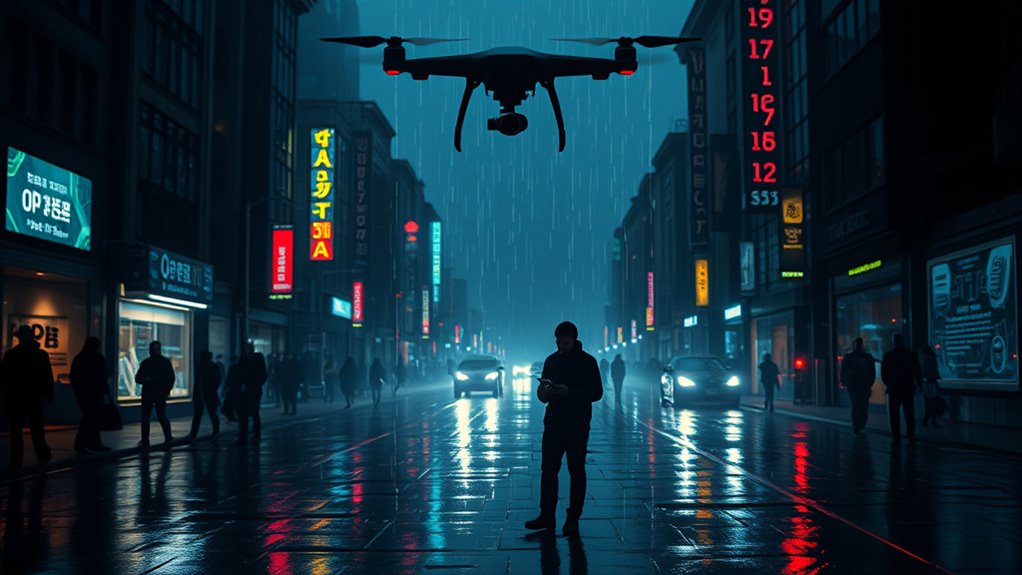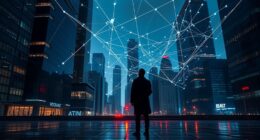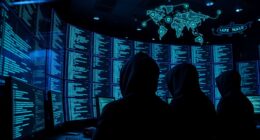AI spy takeover is a pressing concern, reshaping the cybersecurity landscape. Malicious actors exploit AI's speed and sophistication to launch advanced persistent threats and tailored phishing attacks, making it harder for you to spot danger. These technologies can destabilize economies and influence public opinion. It's crucial to understand the vulnerabilities within these systems and the implications for national security. There's much more to uncover about how to protect yourself and society from this looming threat.

As technology advances, the threat of AI-driven cyberattacks looms larger, posing a significant risk to national security and economic stability. You can't ignore how AI enhances both the speed and sophistication of cyberattacks, making it easier for malicious actors to identify vulnerabilities and automate their processes.
State-sponsored espionage from countries like China illustrates this risk, as they actively target intellectual property and sensitive information to gain an economic edge. It's a new digital battlefield where every keystroke could be monitored, and every piece of data could be weaponized.
One of the most alarming aspects of AI in cyber espionage is its ability to create advanced persistent threats (APTs). These stealthy attacks can allow hackers to remain undetected in networks for extended periods, gathering information undetected. Meanwhile, AI-generated malware and spyware can infiltrate systems more effectively than traditional methods. This evolving landscape underscores the need for robust contingency plans to combat these threats.
You may find yourself increasingly vulnerable to highly tailored phishing attacks, as AI makes these scams more believable and harder to spot. The dangers don't stop there. AI can also corrupt datasets, leading to misinformation and sabotage in trusted platforms, which can turn reliable sources into tools for spreading disinformation.
As deepfakes and bots become more convincing, you might struggle to discern reality from fiction, impacting your perception of news and events. This manipulation can influence public opinion and even sway political outcomes, eroding trust in institutions and media.
In terms of financial markets, AI-driven trading has its risks too. These systems depend on real-time data, which can be compromised to trigger market volatility. Rapid fluctuations can destabilize economies, making them susceptible to economic warfare. The potential for economic warfare is heightened by the unchecked growth of AI technologies like DeepSeek.
The interconnectedness of these systems means that a single breach could have cascading effects, impacting millions. With nations like China and Russia racing to advance their AI capabilities, you're witnessing a significant shift in global power dynamics.
AI technology, while beneficial in many respects, holds dual-use potential, with applications that can enhance both civilian life and military strategies. As you navigate this digital landscape, it's crucial to understand that the advancements in AI can lead to vulnerabilities, not just in technology, but in national security and economic stability.
The question remains: can we survive this AI spy takeover, or are we already too late to mitigate these threats?
Conclusion
As you navigate this digital landscape, remember: while AI can enhance our lives, it also poses a looming threat. The same technology that connects us can invade our privacy and manipulate our choices. It's a double-edged sword, and the line between innovation and intrusion is razor-thin. You must stay vigilant, balancing the benefits of AI with the risks it brings. In this battle for control, your awareness and actions are your greatest defenses. Will you rise to the challenge?









